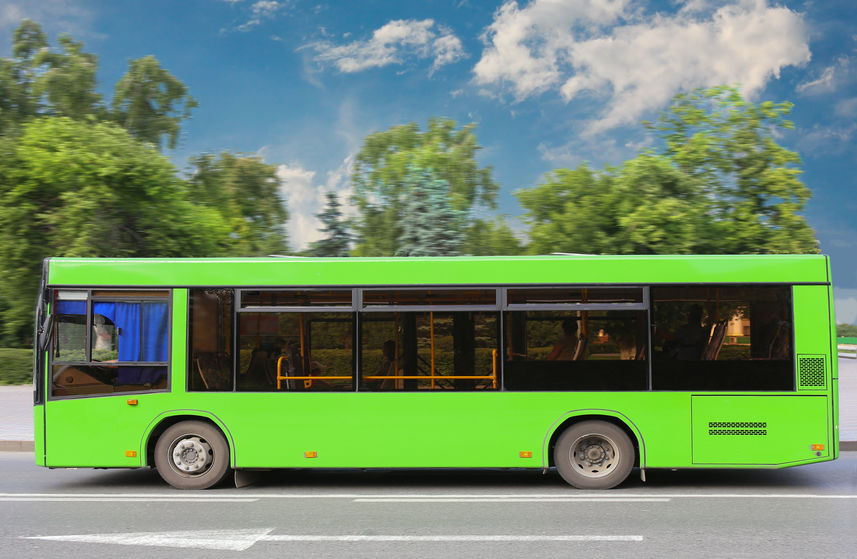Should Americans follow China in a massive commitment to battery-electric buses? California has mandated a carbon-free bus system by 2040 and will only buy battery or fuel cell powered buses after 2029. Other states and cities are following suit.
The keys to vehicle decisions have typically been cost and performance. Cost includes selling price plus maintenance, while performance today includes environmental impact – and to some, that is the only issue that matters.
China today has 420,000 BEBs on the road, with plans to reach 600,000 by 2025. The rest of the world has maybe 5,000 of these expensive, short-range buses. The Chinese, though, still get 70 percent of their energy from coal, so are their BEBs really that green? And are they safe?
Battery costs are the main reason that BEBs today are much more expensive than buses that run on diesel or compressed natural gas. But, say bus makers, BEBs require less maintenance, and activists say that the lower net carbon footprint justifies paying a little bit more.
Upfront and lifetime cost
China got around the UPFRONT COST problem by establishing national mandates, heavily subsidizing bus (and battery) manufacturers, and rewarded cities that replaced entire bus fleets all at one time. This ensured their factories would benefit from economies of scale – and that the transition would be swift and complete.
The U.S. and EU nations, however, focused on subsidizing passenger cars. Thus, there are far more zero-emission passenger cars on the road today in the U.S. and Europe than public transit vehicles. No wonder Westerners still view electric vehicles as subsidized luxuries for the “woke wealthy” who boast about lowering their carbon footprint (despite relying on fossil fuels for electricity).
The huge costs for fast-charging stations across Europe, let alone the vast United States, pose the greatest challenges for future expansion of the electric vehicle market. But transit vehicles, even school buses, run regular routes, and if the routes are short enough, the bus can be recharged overnight at the barn. It can be argued that bad policy — subsidies for the rich — slowed EV (and BEB) acceptance in the U.S.
University of California–Davis researcher Hanjiro Ambrose pointed out another bad federal policy: Funding formulas from the Federal Transit Administration typically favor short-term cost-efficiency over long-term innovation. According to Ambrose, “Those funding mechanisms haven’t been aligned with trying to stimulate policy change. The cheapest technology available isn’t usually the newest technology available.”
To work around high upfront battery costs, some innovative capitalists are creating new financial products that allow fleet owners to finance battery purchases. Treating battery costs the same way as fuel costs – as ongoing expenses – meets federal guidelines. Matt Horton, chief commercial officer for U.S. BEB maker Proterra, says, “The importance of the private capital coming into this market cannot be understated.”
Performance
Green advocates admit the primary reason people choose EVs is the belief that electric cars and buses, even with electricity generated from fossil fuels, are good for the environment. The Union of Concerned Scientists claims BEBs are 2.5 times cleaner in terms of lifestyle emissions than diesel buses. But BEBs with the strongest batteries today can take a full load no more than 150 miles in good weather. Fine for airport shuttles, maybe even for short public transit routes.
Except that electric battery life is shorter than the 12-year vehicle life that many transit and school bus systems rely upon in their budgets. Battery replacement for BEBs is very expensive and unpredictable.
Then there are the horror stories. Los Angeles Metro purchased BEBs from Chinese-owned BYD Ltd. but yanked the first five off the road within a few months. Agency staff called the buses “unsuitable,” poorly made, and unreliable for more than 100 miles. Albuquerque returned seven out of its 16 BYD buses, citing cracks, leaking fluid, axle problems, and inability to hold charges.
French journalist Alon Levy reported that, BEB sales teams in Vancouver admitted their buses could not run for an entire day without recharging during layovers. But rapid recharging is labor-intensive, since a worker must supervise it, unlike recharging or refueling at the end of the day. In Minneapolis, bus performance suffered in cold weather. At 20o F, the bus could not last all day. On Super Bowl Sunday, a 5o F day, the bus only lasted 40 minutes, covering about 16 miles.
In largely rural Maine, lawmakers proposed converting all school buses to BEBs. But Adam Crepeau, a policy analyst at the Maine Heritage Policy Center, argued that BEBs can travel no more than 135 miles per charge (in good weather), while diesel buses go up to 400 miles and can be refilled anywhere. “This,” he said, “will severely impact the ability of schools to use them for longer trips for sporting events, field trips, and other experiences for students.”
The bottom line
Activists and sales teams are pressing American cities, school boards, and other public entities to follow China and convert their fleets to BEBs, calling them “the wave of the future” (even in California, where lengthy power outages have become routine). Given the vulnerability of our electric grid (among other concerns), cost and performance may not be the only considerations in making such an irreversible choice.
